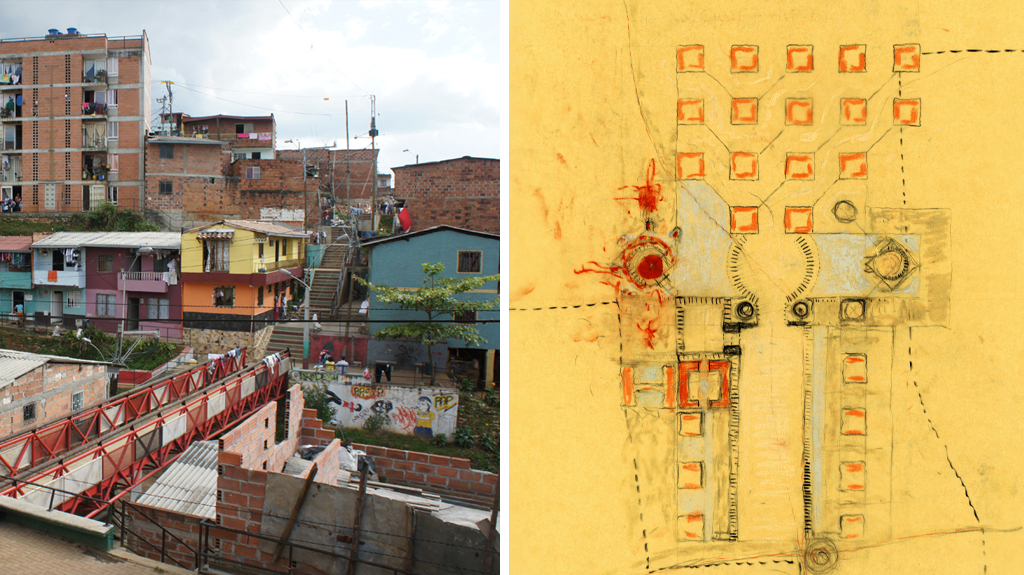Connective spaces and social capital in Medellín
Jeff Geisinger investigates the built environment's impact on social capital in Colombia's second-largest city.
[L] View of rehabilitated housing along the Juan Bobo Stream. Credit: Jeff Geisinger. [R] Louis Kahn, Early Sketch of the Public Space, 1974. Credit: the Louis I. Kahn Collection, The University of Pennsylvania.
The Deborah J. Norden Fund, a program of The Architectural League of New York, was established in 1995 in memory of architect and arts administrator Deborah Norden. The competition awards up to $5,000 annually in travel grants to students and recent graduates in the fields of architecture, architectural history, and urban studies.
In 2010, the Architectural League awarded two grants: one to Jeff Geisinger for “Connective spaces and social capital in Medellin,” and another to Shima Baradaran Mohajeri for “Transversal modernity: Spatial discourse in architectural paper projects in Iran, 1960-1978.″
Jeff Geisinger studied a series of urban interventions made in the sub-standard neighborhoods of Medellin, Colombia, to understand how architecture can play a role in increasing social capital by improving the quality of life in these comunas and connecting them to the rest of the city. Focusing on “the collaborative process between community members and designers” Geisinger analyzed the successes and shortcomings of these street-level improvements.
Jeff Geisinger is a designer at Ennead Architects and a registered architect in the state of New York. His experience includes the Yale University Art Gallery Expansion, New York City Center Renovation and Restoration, and the State University of New York Center for Agriculture and Natural Resources at Cobleskill. Prior to joining Ennead, Jeff worked as a designer with the studio of Guillermo Vazquez Consuegra in Seville, Spain. He holds a Bachelor of Architecture degree from Rice University.
Norden Fund grantee Shima Baradaran Mohajeri examines a 1973 design proposal for a civic center in Tehran by Louis Kahn that confronted an ongoing tension between modernization and traditionalism in Iran in the 1960s and ‘70s. After careful analysis of architectural drawings, photographs of models, and correspondence from the Kahn archives, Mohajeri considers the unrealized project as a result of a “transversal practice that … resist[s] the traditional, representational, and hierarchical structures of space” and thereby “allows architecture and public space to survive as a practical site of critique of society and its cultural and political positions.”
Shima Mohajeri is a trained architect with a PhD in the history and theory of architecture from Texas A&M University. She is currently working on the manuscript of her first book, which connects the cultural theory of space with specific aesthetic and architectural practices in the history of modernism that are entangled with the past and present of Iran, its artifacts, and its politics. She taught design studios in the College of Architecture at Texas A&M University and Azad University in Tehran.
As part of the Architectural League's Vacant Lots program, Mark Robbins considers the housing needs of non-nuclear families and disenfranchised populations.
What does building for the arts mean in the 21st century?
The League talks with a co-founder of Little Free Library, LTD about the origins of the idea and how it grew into an international movement.
